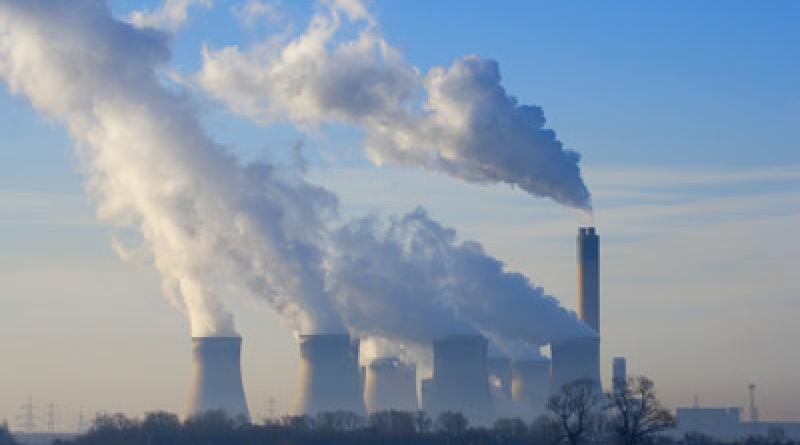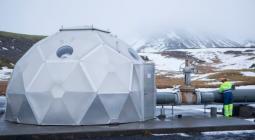The overreliance on carbon capture.

As governments and companies jostle to show how committed they are to fighting global warming, plans to take carbon dioxide out of the air are becoming a giant loophole — just as experts have warned for years.
The UN Principles for Responsible Investment estimates that some 42 companies announced net-zero targets in 2019 and 2020. More than half of those plan to plant trees, preserve forests or capture CO₂ in order to get there, even as their own businesses continue to warm the atmosphere.
These measures, and other technologies to capture greenhouse gases, are collectively known as carbon dioxide removal (CDR). But CDR shouldn’t be a get-out-of-jail-free card for polluters. There’s a limit to how much CO₂ can plausibly be removed. There's only so much land available to plant new trees, and most other methods are expensive and difficult.
As net-zero plans proliferate, some companies assume they can rely disproportionately on CDR to offset their own emissions. It’s not just about planting trees. There are even plans to create “negative emissions” by generating energy from burning biomass, then capturing the emissions produced, a little-used process that also requires large amounts of land.
In a new report, Greenpeace UK points out that the Intergovernmental Panel on Climate Change estimates between 500 and 3,600 million metric tons of CO₂ could be removed annually through planting new forests by 2050. British Airways operator International Airlines Group and Italian oil company Eni each claim they’ll offset 30 million metric tons per year by then. That could be as much as 12% of the IPCC’s projection, Greenpeace warns.
The IPCC also estimates that there’s only about 500 million hectares of land left that can be dedicated to new forests for carbon capture. Royal Dutch Shell Plc alone, Greenpeace says, has proposed planting a tenth of that amount to achieve its net-zero target.
Some company plans look even worse when you consider their industries. For example, power generation has long been considered so easy to decarbonize with wind and solar that the IPCC and the International Energy Agency assume it can get to zero emissions without any CDR. That that hasn’t stopped U.S. electricity companies like Duke Energy Corp and Southern Co. from planning to offset the equivalent of 5% and 10% respectively of their current annual emissions with CDR.
In a way, this is a problem of the scientific community’s own making. CDR features in virtually every pathway laid out in IPCC reports to keeping global warming to well below 2 or 1.5 degrees Celsius. Some of the roadmaps assume amounts of negative emissions that vastly exceed the best estimates of what’s economically feasible.
Researchers have been critical of these pathways’ reliance on carbon capture for years now. A paper by Kevin Andrews and Glen Peters published in 2016 titled “The Trouble with Negative Emissions” has had almost 500 citations, according to Google Scholar. The same year, climate scientist James Hansen warned that negative emissions had “spread like a cancer” in the climate scenarios.
Few dispute that negative emissions will be needed, and not all plans that include negative emissions look irresponsible. Some emissions – like those produced by heavy industry and transport – will be so difficult to cut that researchers and policymakers believe they should get priority in using CDR to mitigate their climate impact. And not all companies with net zero plans are grasping for more than their share. Steel producer ThyssenKrupp AG aims to produce carbon-neutral steel by 2050, and shipping company A.P. Moller-Maersk A/S says it will have carbon neutral ships within a decade without offsets.
Others maintain they’ll lean on CDR, but will avoid forest-based measures because it’s so hard to tell if they’re genuinely making a difference. As Bloomberg Green’s Akshat Rathi wrote this week, Occidental Petroleum Corp hopes to make a profitable business out of direct air carbon capture, a technically challenging proposition.
Sabine Fuss of the Mercator Research Institute, an expert on the real-world potential of negative emissions, cautions against attempting to set a limit on global CDR efforts, let alone allocating it by sectors, company, and country. “The issue is probably not so much about getting budgets right and distributing them exactly, but the fear that is implicit here is that removals could be used as an excuse by companies not to proceed with decarbonization of their existing processes or that their allocation could lead to double-counting," she told me via e-mail.
It’s still likely that tree-based measures will remain a tempting solution. Growing demand is set to boost the market for offsets. The simplicity of planting trees is appealing and the pressure to set net-zero targets will mean more companies turn to using large swaths of land to bolster their climate credibility. Charlie Kronick, who leads finance work at Greenpeace UK, said the risk comes from “trumpeting headline pledges” of net zero without reading the fine print. The onus is on regulators, investors, consumers and the media to remember that net-zero climate targets are only as good as the "net."
Kate Mackenzie writes the Stranded Assets column for Bloomberg Green. She advises organizations working to limit climate change to the Paris Agreement goals. Follow her on Twitter: @kmac. This column does not necessarily reflect the opinion of Bloomberg LP and its owners.
15 January 2021
Bloomberg Green




